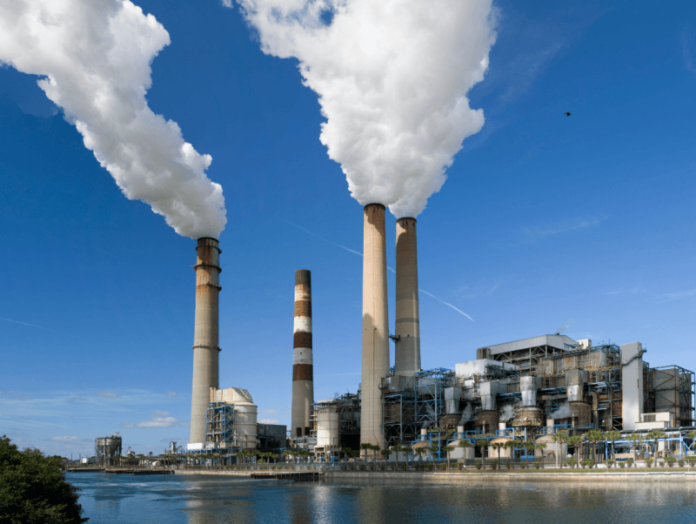India’s aggressive energy policies and decisive action in the last two years are likely to result in the country surpassing its Paris Agreement NDC commitment ahead of schedule. Can it now set a more ambitious target for itself?
The continuing rapid growth in renewable energy in India, combined with sustained reductions in coal imports and a slowdown in coal development—with coal-fired “ultra-mega power projects” cancelled—is a strong indication that the low carbon transformation of India’s energy supply sector is gathering momentum. The ongoing growth of renewable energy and slowdown of coal in India is the most important development underway globally today.
A report by Climate Action Tracker (http://climateactiontracker.org/countries/india.html ) notes that India’s Nationally Determined Contribution (NDC) under the Paris Agreement (PA) does not yet reflect these developments. Yet, under current policies, with the targeted 175 GW of renewable power capacity to be reached by 2022, India is already set to over achieve its 2030 NDC emissions intensity target. The likely continued expansion of renewables after 2022, for which no targets have yet been set, would result in India also overshooting the 2030 non-fossil capacity target set in its NDC.
In addition, the Draft Electricity Plan projects that, despite the increasing electricity demand, no new coal capacity, apart from the capacity already under construction, would be needed after 2022. If the Draft Electricity Plan is implemented, India will achieve its NDC’s 2030 40% non-fossil capacity target before 2022, and will reach 57% by 2027.
India’s Paris Agreement NDC commitment now appears weaker and is ripe for improvement. India’s NDC and current policies are rated “2°C compatible”. This means that other countries are required to make deeper reductions and comparably greater effort to limit warming to 1.5°C. If all countries were to follow India’s approach, warming could be held below—but not well below—2°C, and hence would still be too high to be consistent with the Paris Agreement’s 1.5°C temperature limit. Upgrading the Indian NDC to match planned policies would move India’s NDC towards the CAT’s “1.5°C Paris Agreement compatible” rating and would place it in a leadership position globally.
On 2 October 2016, India ratified the Paris Agreement. India’s NDC targets to lower the emissions intensity of GDP by 33%–35% by 2030 below 2005 levels, to increase the share of non-fossil based power generation capacity to 40% of installed electric power capacity by 2030 (equivalent to 26–30% of generation in 2030), and to create an additional (cumulative) carbon sink of 2.5–3 GtCO2e through additional forest and tree cover by 2030.
Given that the coverage is not specified, the tracker has assumed that the 2030 intensity target excludes the agriculture sector, consistent with India’s Copenhagen pledge to reduce the emissions intensity of GDP by 20%–25% by 2020 below 2005 levels.
Under the assumption of a 7.2% annual GDP growth, it rates the absolute emissions levels resulting from both the 2020 and 2030 intensity targets “2°C compatible”. The non-fossil generation target would result in lower absolute emissions than the intensity target alone, effectively leading to a larger reduction in intensity than in the NDC target itself. As the non-fossil generation target is conditional on the provision of resources, the CAT rating is based on the intensity target.
Not Enough to Cope With Demand
Although India’s 2022 renewable energy target represents a rapid increase in renewable energy generation, this is not enough to keep up with growth in electricity demand. Between 2014 and 2030 under current policies, Climate Tracker estimates the average annual growth rate for solar and wind power generation is around 3%—about half the growth rate of overall electricity production.
During the same period, under our current policy pathway, it projects capacity additions of 154–267 GW for solar and wind power, and 186–217 GW for coal power. 50 GW of coal-fired power capacity is currently under construction in India, with another 178 GW in the permitting pipeline (The Energy Mix, 2016). Were all these plants to be built, this would result in considerable overcapacity. Ultimately, this would lead to a greater lock-in of carbon-intensive power infrastructure in India than appears necessary.
There is substantial uncertainty on the future of coal power capacity in India – as illustrated by the Energy Ministry’s proposal to cancel the construction of four coal-fired Ultra Mega Power Plants (UMPPs) in June 2016. Leading coal power producers such as Adani are known to have suspended investments and further development in this area and instead have scaled up investments in solar and renewable energy in both India and Australia.
Also, the Draft Electricity Plan confirms that no new coal capacity is needed after 2022, apart from the 50 GW that is already under construction and is likely to be ready by 2022. The Draft Electricity Plan further assumes that no gas fired capacity will be deployed after 2022 as the availability of natural gas is uncertain in India. Based on the Draft Electricity Plan, it calculates that India will significantly reduce its emissions and, by 2030, its emissions intensity will be 51–53% below 2005 levels, exceeding its NDC target.










